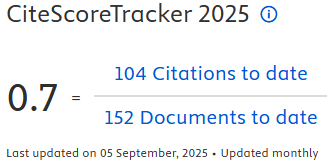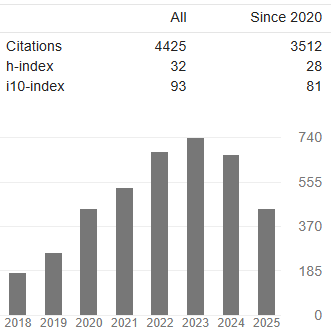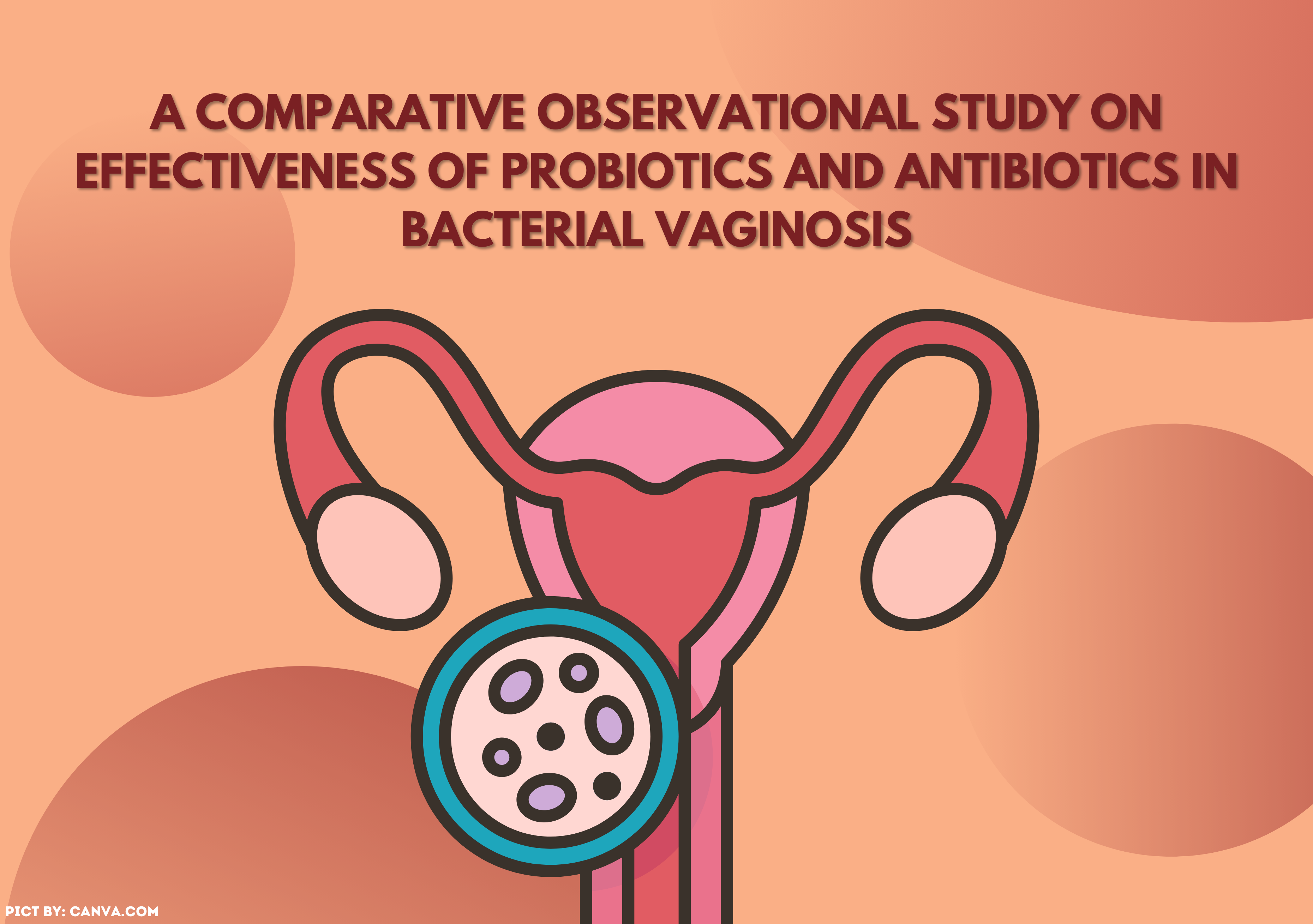IMPLEMENTATION OF WATER SUPPLY SUPERVISION IN CLASS 1 PORT HEALTH OFFICE IN JUANDA AIRPORT WORKING AREA, SURABAYA
Downloads
ABSTRACT
The provision of clean water in the Class 1 Surabaya Port Health Office is supervised in accordance with the existing regulations to identify sources that could potentially cause pollution and prevent the occurrence of illness caused by unstandardized water quality and unsafe water supply. This study aimed to describe the implementation of clean water supply supervision in the Class 1 Surabaya Port Health Office in the Juanda Airport working area, Surabaya. This was an observational study which analysis was descriptive in nature. The clean water was tested for physical, chemical, and microbiological parameters, and the results showed that the water quality was in accordance with the Regulation of the Indonesian Ministry of Health No. 416 of 1990 about the Terms and Monitoring of Water Quality. However, the result from the simple chemical inspection test of the water showed that it did not fulfil health standards i.e., the residual chlorine score not equal to 0 (zero). It is suggested that more attention and supervision are conducted by water management authorities to ensure the standard residual chlorine level of 0 (zero). Additionally, expired reagents or reagents that have already changed color should not be used as it will affect the parameters tested.
Keywords: Quality of clean water, clean water supply facilities, water sampling process
Afrianita, R., Komala, P. S., dan Andriani, Y. (2016). OP-026 Kajian Kadar Sisa Klor Di Jaringan Distribusi Penyediaan Air Minum Rayon 8 Pdam Kota Padang. In Seminar Nasional Sains dan Teknologi Lingkungan II.
Caesar, D. L., dan Prasetyo, E. (2017). Analisis Kualitas Fisik Air Desa Cranggang Kecamatan Dawe Kabupaten Kudus. Jurnal Kesehatan Masyarakat (JKM) CENDEKIA UTAMA, 5(1).
Decree of the Minister of Health of the Republic of Indonesia. 2007. Keputusan Menteri Kesehatan Republik Indonesia Nomor 431/MENKES/SK/IV/2007 Tentang Pedoman Teknis Pengendalian Risiko Kesehatan Lingkungan di Pelabuhan/Bandara/Pos Lintas Batas dalam Rangka Karantina Kesehatan.
Dewanti, R. A., dan Sulistyorini, L. (2017). Analisis Kualitas Bakteriologis Air Minum Isi Ulang Di Kelurahan Sememi, Kecamatan Benowo. The Indonesian Journal of Public Health, 12(1), 39–50. https://doi.org/http://dx.doi.org/10.20473/ijph.v12i1.2017.39-50
Geost, F. (2018). Apa itu Air ? Pengertian, Fungsi, Sumber, dan Manfaatnya.
Hatifah, P., Anwar, A., dan Risva, R. (2019). Faktor-Faktor Yang Berhubungan Dengan Kualitas Bakteorologis E.Coli Sungai Karang Mumus Serta Gejala Diare Pada Balita Di Kelurahan Bandara Kecamatan Sungai Pinang Kota Samarinda. HIGIENE: Jurnal Kesehatan Lingkungan, 4(3), 159–168. Universitas Islam Negeri Alauddin Makassar
Natalia, L., Bintari, S., dan Mustikaningtyas, D. (2013). Kajian Kualitas Bakteriologis Air Minum Isi Ulang Di Kabupaten Blora. Unnes Journal of Life Science, 2(2), 71–77.
Regulation of the Minister of Health. 1990. Peraturan Menteri Kesehatan Nomor : 416/MEN.KES/PER/IX/1990 Tentang Syarat-syarat Dan Pengawasan Kualitas Air.
Regulation of the Minister of Health. Peraturan Menteri Kesehatan Republik Indonesia Nomor 2348/Menkes/Per/Xi/2011 Tentang Perubahan Atas Peraturan Menteri Kesehatan Nomor 356/Menkes/Per/Iv/2008 Tentang Organisasi Dan Tata Kerja Kantor Kesehatan Pelabuhan.
SNI. 7828:2012 . Kualitas air – Pengambilan contoh - Bagian 5: Pengambilan sontoh air minum dari instalasi pengolahan air dan sistem jaringan distribusi perpipaan (ISO 5667-5:2006, MOD).
Sunarti, R. N. (2016). Uji Kualitas Air Mium Isi Ulang di Sekitar Kampus UIN Raden Fatah Palembang. Bioilmi: Jurnal Pendidikan, 2(1).
Syahputra, B. (2012). Prosiding SNST ke-3 Tahun 2012 Fakultas Teknik Universitas Wahid Hasyim Semarang ANALISA SISA CHLOR PADA JARINGAN DISTRIBUSI AIR MINUM PDAM KOTA SEMARANG. 1–5.
Winati, L. (2014). Alasan kenapa kadar klor tidak boleh berlebih di air.
Zikra, W., Amir, A., dan Putra, A. E. (2018). Identifikasi Bakteri Escherichia coli (E.coli) pada Air Minum di Rumah Makan dan Cafe di Kelurahan Jati serta Jati Baru Kota Padang. Jurnal Kesehatan Andalas, 7(2), 212–216.
- The authors agree to transfer the transfer copyright of the article to The Indonesian Journal of Public Health effective if and when the paper is accepted for publication.
- Authors and other parties are bound to the Creative Commons Attribution-NonCommercial-ShareAlike 4.0 International License for the published articles, legal formal aspect of journal publication accessibility refers to Creative Commons Attribution-NonCommercial-ShareAlike 4.0 International License (CC BY-NC-SA), implies that:
- Attribution ” You must give appropriate credit, provide a link to the license, and indicate if changes were made. You may do so in any reasonable manner, but not in any way that suggests the licensor endorses you or your use.
- NonCommercial ” You may not use the material for commercial purposes.
- ShareAlike ” If you remix, transform, or build upon the material, you must distribute your contributions under the same license as the original.































